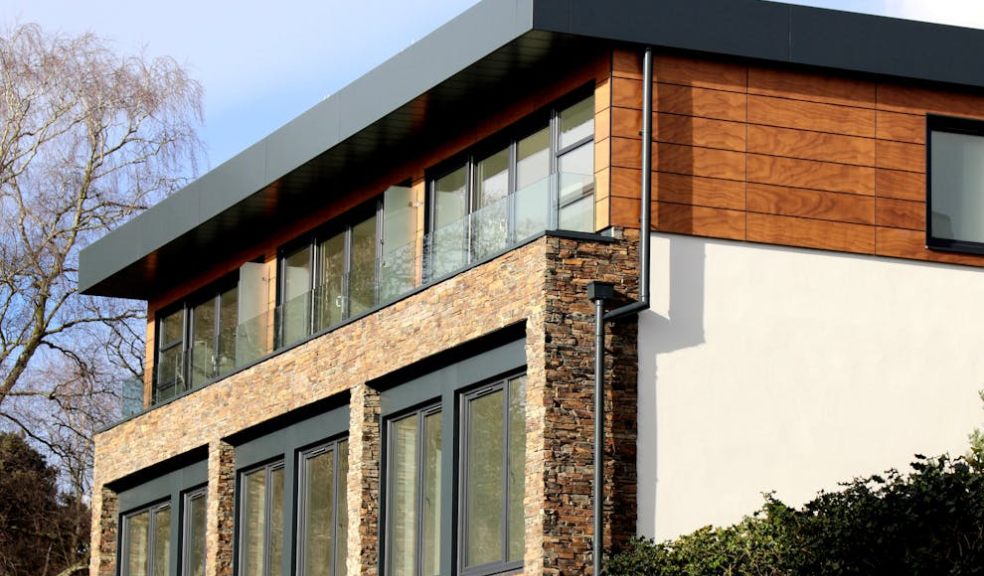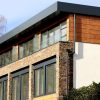
The Benefits of Liquid Waterproofing for Flat Roofs
Flat roofs are a popular choice for many modern buildings across the UK due to their sleek design, efficient use of space, and cost-effectiveness. They are commonly found on commercial properties, apartment complexes, and even residential homes seeking a contemporary look. However, one of the main challenges with flat roofing systems is ensuring effective waterproofing. Because they lack the natural slope that helps water drain away, flat roofs are more susceptible to leaks and water damage.
Liquid waterproofing has emerged as one of the most reliable and versatile solutions for protecting flat roofs from these issues. This advanced method offers a seamless, durable, and cost-effective way to maintain roof integrity, making it an increasingly popular choice among architects, builders, and property owners alike.
Understanding Liquid Waterproofing
Liquid waterproofing is a modern roofing technique that involves applying a specialised liquid membrane directly onto the roof surface. Once cured, the liquid forms a continuous, flexible, and watertight layer that protects the roof from rain, snow, and environmental damage.
Unlike traditional roofing materials such as felt, asphalt, or bitumen sheets that come in rolls and require overlapping, liquid waterproofing eliminates seams — the areas most prone to leakage. The material can be applied to various substrates, including concrete, timber, metal, and existing roofing systems, making it suitable for both new constructions and refurbishments.
Depending on the product used, the liquid membrane may be polyurethane, acrylic, or bituminous-based. These materials are designed to provide superior flexibility and resistance to UV rays, extreme temperatures, and chemical exposure.
Seamless Protection Against Leaks
One of the most significant advantages of liquid waterproofing is the seamless barrier it creates. Traditional roofing systems often involve joints or overlaps, which can deteriorate over time and become weak points where water seeps through.
With liquid waterproofing, there are no seams or joints to worry about. The membrane is applied as a liquid and hardens into a single, unbroken surface that completely seals the roof. This ensures superior protection against leaks, even around complex roof structures such as vents, skylights, and drainage outlets.
Flexibility and Durability
Flat roofs are subject to constant thermal movement due to temperature fluctuations. As materials expand and contract, rigid waterproofing systems may crack or lose adhesion, leading to leaks and costly repairs.
Liquid waterproofing systems are designed to remain flexible even after curing. This elasticity allows them to move with the structure without splitting or tearing. Whether in freezing winters or hot summers, the membrane adapts to the roof’s movements while maintaining its integrity.
Additionally, high-quality liquid membranes are resistant to UV degradation, which can be a major issue for roofs exposed to direct sunlight. This UV stability ensures that the waterproofing remains effective for many years, reducing the need for frequent maintenance or replacement.
Ease of Application and Versatility
Another key benefit of liquid waterproofing for roofs is its ease of application. The liquid can be applied using a roller, brush, or spray, allowing it to conform to any roof shape or contour. This versatility makes it ideal for roofs with irregular features or multiple penetrations.
It can also be applied to various materials — including concrete, metal, bitumen, or existing membranes — without the need for complete roof replacement. This makes it a convenient and cost-effective option for refurbishing old or damaged flat roofs.
Since liquid waterproofing is cold-applied, there’s no need for open flames or heat-based installation methods, reducing safety risks on site. This makes it particularly suitable for occupied buildings or areas where traditional hot works would be hazardous.
Cost-Effective Long-Term Solution
While the initial cost of liquid waterproofing may be comparable to other methods, its long-term savings are considerable. The seamless finish and superior durability mean fewer repairs and maintenance requirements over the roof’s lifespan.
Moreover, liquid waterproofing can extend the life of an existing roof without the need for a full replacement. Instead of stripping away old materials, contractors can apply the liquid membrane over the current surface after proper preparation. This reduces labour costs, waste disposal fees, and disruption to building operations.
When maintained correctly, high-quality liquid waterproofing systems can last for decades, offering excellent value for money and a strong return on investment.
Energy Efficiency and Environmental Benefits
Many liquid waterproofing systems offer added benefits beyond just water resistance. Some products are formulated with reflective properties that help reduce heat absorption, keeping buildings cooler during summer months. This can lead to lower energy consumption and reduced cooling costs, especially for commercial or industrial properties with large roof areas.
Furthermore, because liquid waterproofing can be applied over existing roofing systems, it minimises material waste and landfill disposal, making it an environmentally friendly option. Many modern formulations are also low in volatile organic compounds (VOCs), contributing to safer, cleaner application processes and improved sustainability credentials.
Minimal Disruption During Installation
For businesses or residential complexes, downtime can be a major concern during roof repairs or renovations. Traditional roofing methods often require extensive preparation, removal of old materials, and noisy installation processes that disrupt daily operations.
Liquid waterproofing offers a quieter, faster, and less intrusive alternative. The liquid membrane is applied directly to the existing surface, significantly reducing installation time and disruption. Because there is no need for heavy machinery or open flames, the process is safer and more efficient, allowing building occupants to continue their routines with minimal interference.
Compatibility with Other Roofing Systems
Liquid waterproofing is highly adaptable and can be integrated with a wide range of roofing systems. Whether the roof features traditional materials, green roof systems, or solar panels, liquid waterproofing can be applied without causing interference.
Its ability to adhere to diverse surfaces and accommodate complex details makes it a versatile solution for both modern constructions and older buildings. In cases where a roof requires additional insulation or energy-saving features, the waterproofing layer can work seamlessly with thermal coatings or protective finishes.
Low Maintenance Requirements
Once installed, liquid waterproofing systems require minimal maintenance. The tough, seamless membrane resists cracking, blistering, and peeling — common issues in traditional roofing materials. Routine inspections and occasional cleaning are typically sufficient to ensure long-term performance.
Because of its durable nature, the membrane can withstand foot traffic, which is particularly useful for flat roofs that double as maintenance platforms or terraces. Should any damage occur, repairs are straightforward: the affected area can simply be re-coated without removing the entire system. This ease of maintenance adds further to the long-term cost savings.
Enhanced Aesthetic Appeal
Beyond functionality, liquid waterproofing also contributes to the aesthetic appeal of a property. The smooth, seamless finish creates a clean and modern look that complements contemporary architectural styles. The liquid membrane can also be tinted in various colours, allowing property owners to match or contrast with the building’s design.
For commercial buildings, where appearance can impact brand perception, maintaining a well-kept and visually appealing roof is an added advantage.
Final Thoughts
Flat roofs have always posed unique challenges when it comes to waterproofing, but advancements in liquid roofing technology have transformed how these challenges are addressed. The benefits of liquid waterproofing — including seamless protection, flexibility, durability, and cost efficiency — make it one of the most effective solutions available today.
From enhancing safety and energy efficiency to providing long-term value, liquid waterproofing is a modern innovation that protects both the structure and the investment. For builders, architects, and property owners seeking reliability and performance, this method offers the perfect blend of practicality and durability.

















